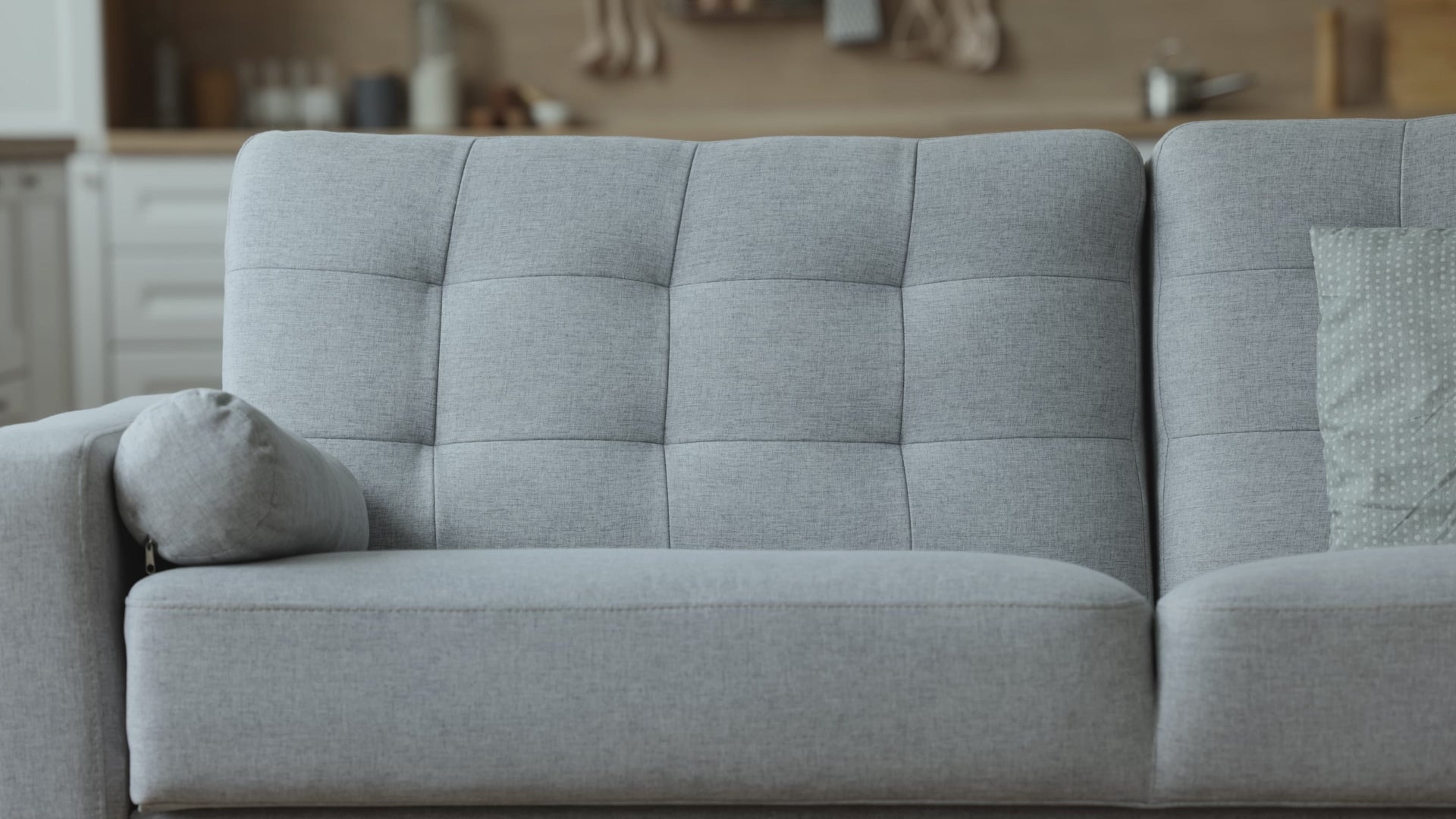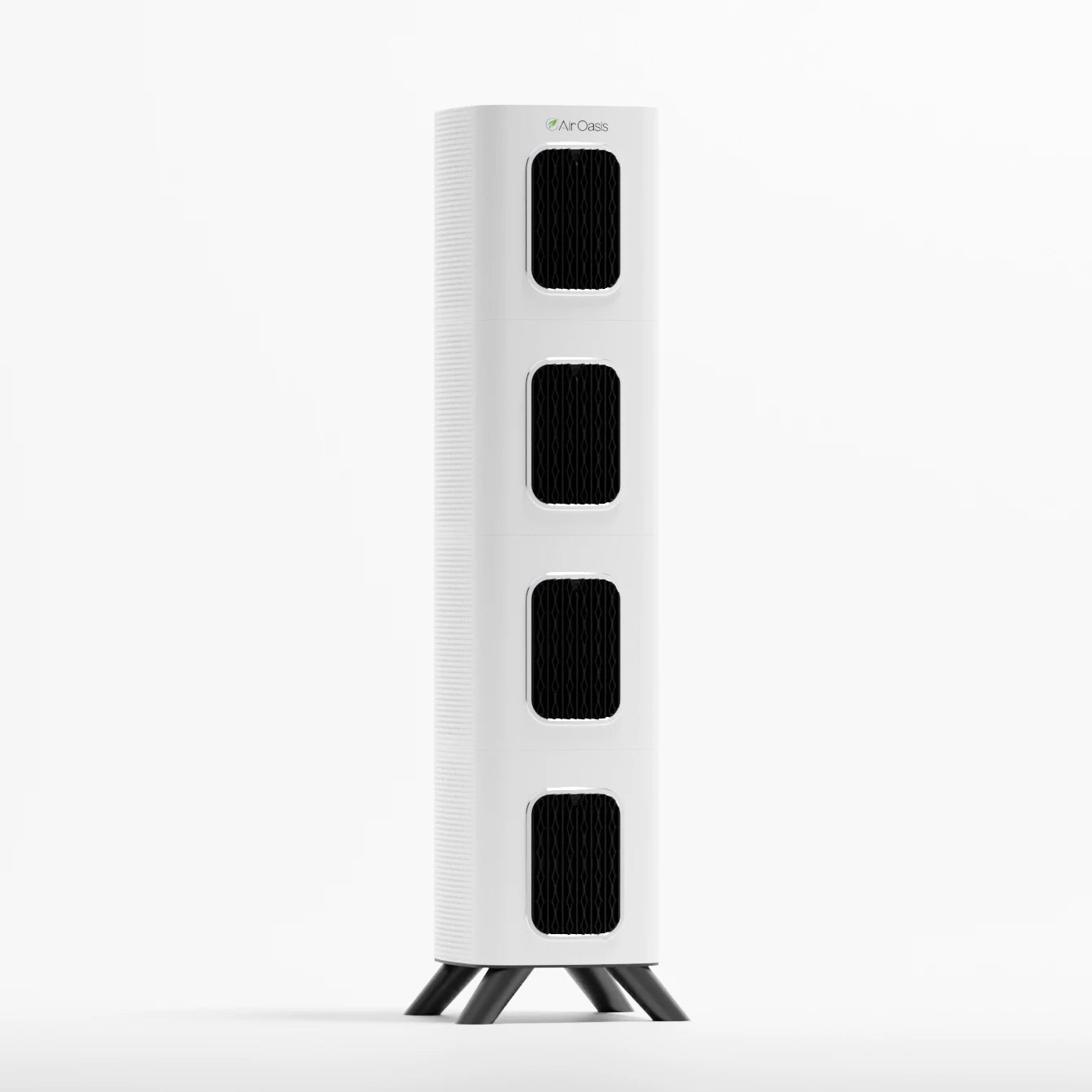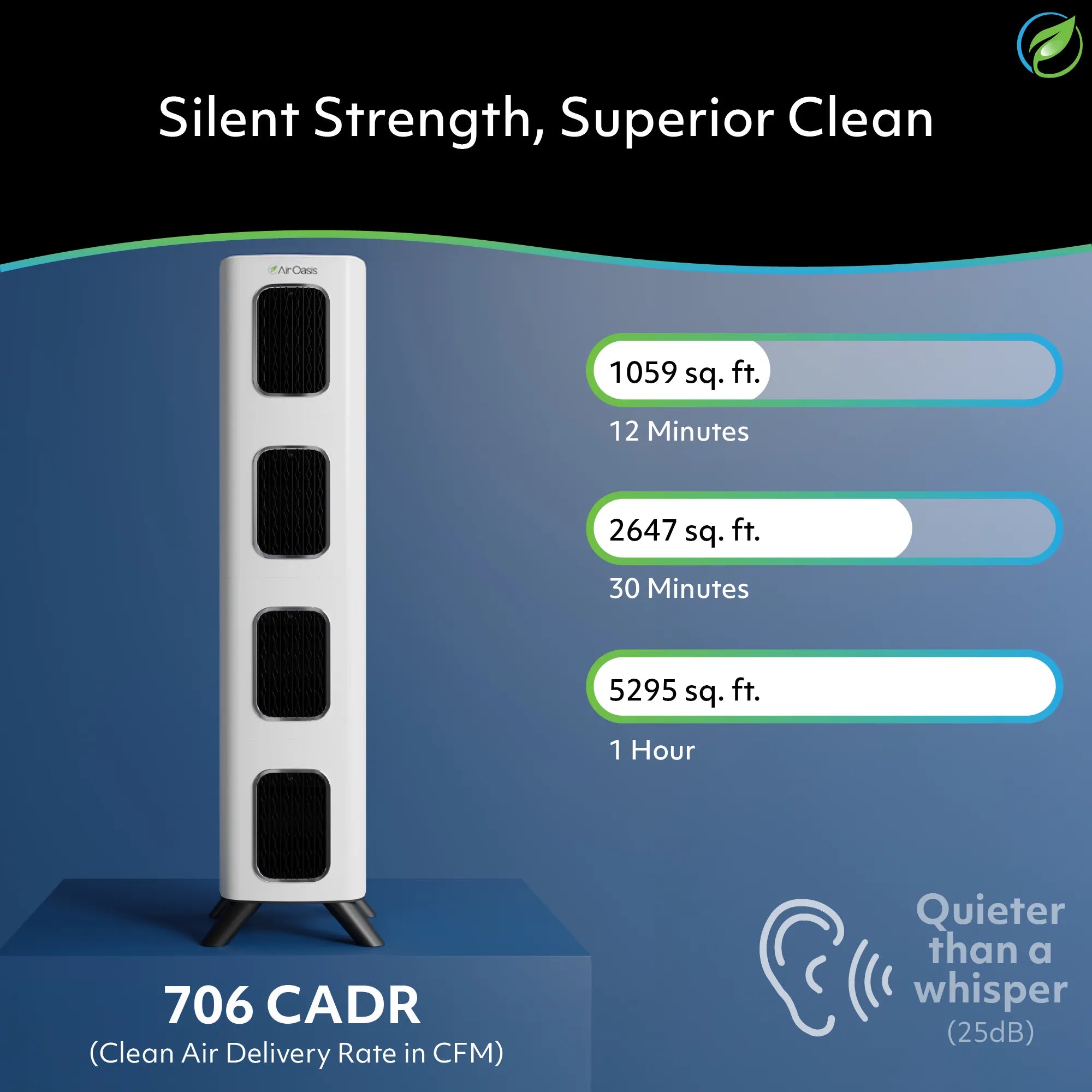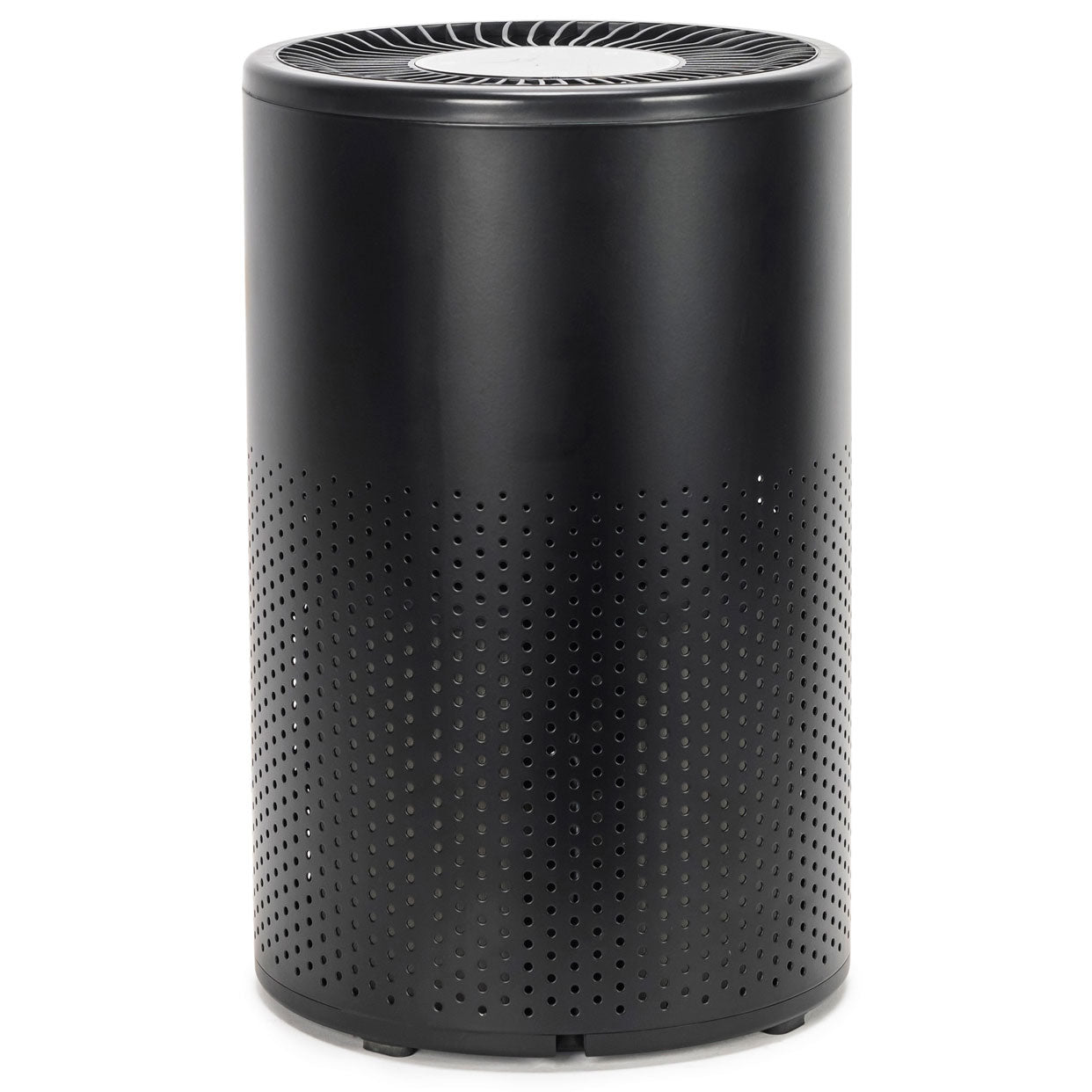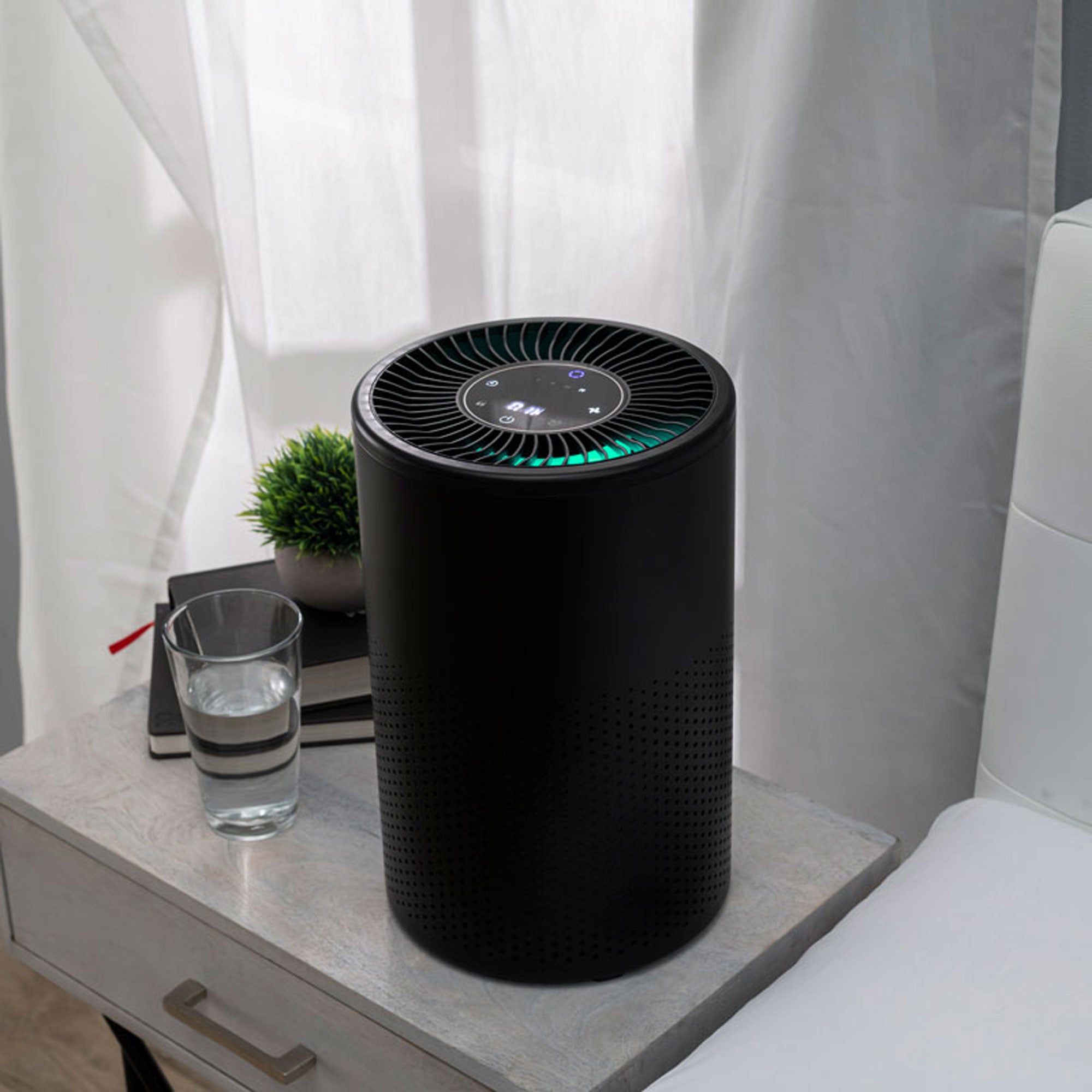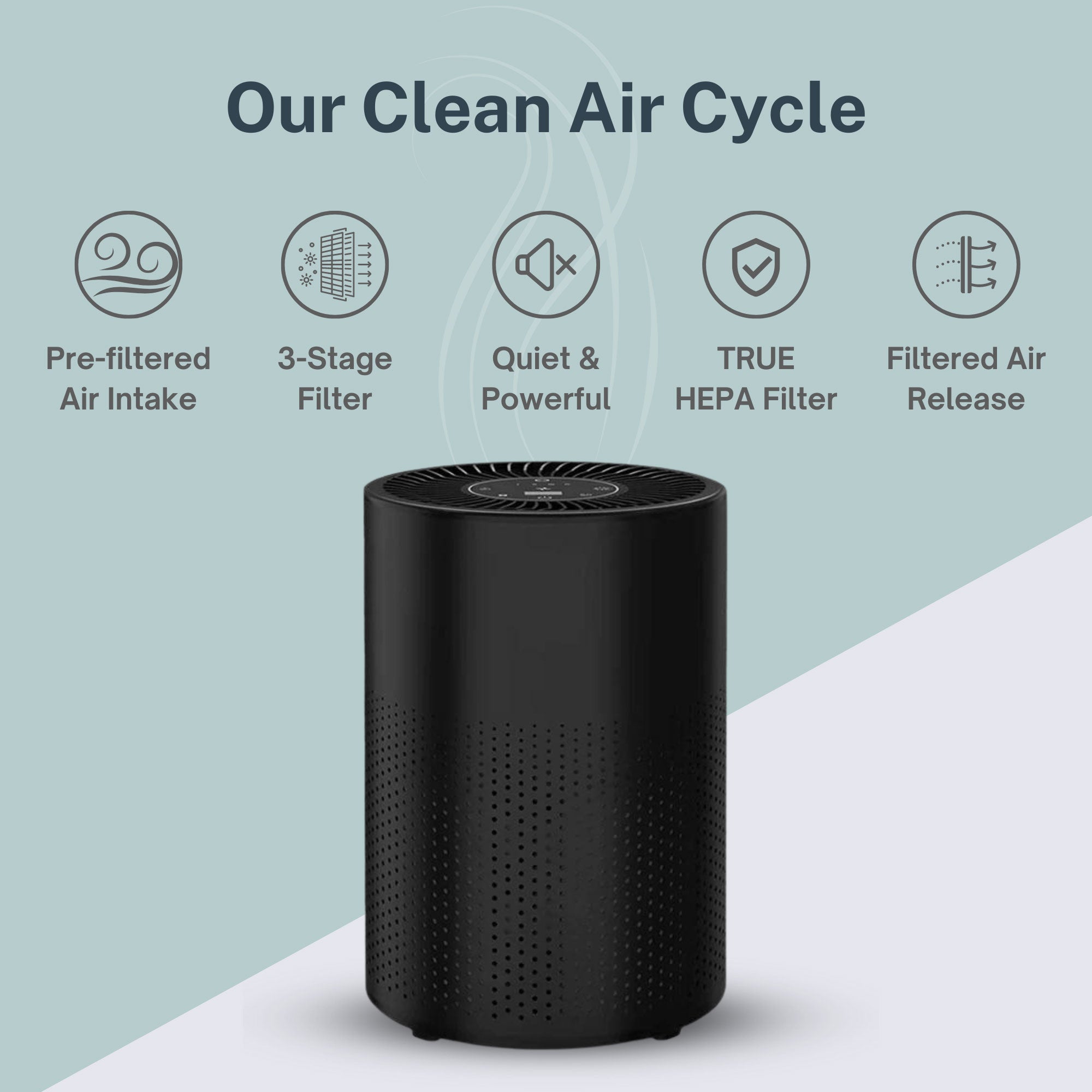You want your air purifier to deliver optimal results—we get it. Perhaps the most significant factor in its effectiveness is where you put your air purifier. In fact, location can increase quality output by up to 2.5%.
Is the device best suited for a corner? Center stage? Somewhere in between?
Today, we’ll provide you with space planning tips for your new air purifier to get the most out of it, creating a healthier living environment for you and your family.
Does Air Purifier Placement Matter?
The basic functionality of an air purifier is simple: the machine intakes contaminated air, cleans it, and pushes out the newly clean air into the space.
To make the most of this cleaning process, you need to ensure your air purifier is in the right location in your room. Too secluded, you run the risk of minimizing effectiveness. Too open, and you may need a larger device to accomplish your clean air goals.
Let's explore core guidelines, room-specific recommendations, and considerations for open-concept spaces to help you position your device for optimal air cleaning.
What’s The Best Spot to Put An Air Purifier?
Everyone’s space, floor plan, layout, and interior furnishings differ. Knowing your space is the first step in determining where to place your air purifier. Here are some guidelines to help you get started.
Choose a Central Location
Place your air purifier in a central area of the room to allow for efficient airflow and circulation. This means you should keep your device away from walls, corners, and other obstructions (more on why in a second).
Elevate the Device
Positioning your purifier slightly off the ground, such as on a table or shelf, can improve its performance.
Why? Because you notice the biggest benefit from clean air when you breathe it. In rooms where you’re sitting, like a living room or office, the device can be closer to the ground, but in rooms where you predominantly stand, a slightly higher elevation tends to be more effective.
Note this technique is only effective for small, portable air purifiers. If you have a larger air purifier that stands a bit further from the ground, you wouldn’t need to make those usability adjustments.
Keep It Away From Obstructions
Air purifiers aren’t necessarily decorative, so it’s natural to consider placing them in a corner or tucked away from view. But doing so dampers its potential impact. There are a few reasons for this.
First, the device needs room to both intake air and properly circulate it around the room. Hiding it in a corner decreases the space it has to work with. Plus, if your air purifier is blocked by a wall or furniture, most of the clean air will get obstructed or absorbed by that blockade, not getting the chance to make it around the room.
A good rule of thumb is ensuring you’ve got 3-5 feet of clear space around the unit to allow for unimpeded air intake and output.
Put an Air Purifier Near a Pollution Source
Household allergens and pollutants are all too common. When possible, place your air purifier near those indoor allergen sources, including:
- Pet areas
- Kitchens
- Bedrooms
- Basements
- Laundry areas
Air purifiers can actively remove allergens like dust, pollen, mold spores, and more from the air, so placing them in allergen-prone areas helps keep the air cleaner.
Are There Room-Specific Air Purifier Placement Guidelines?
Yes, different rooms require different placements to maximize your air purifier. Let’s take a look at common household spaces where your air purifier can make a big impact.
Bedroom
Air purifiers can have a dramatically positive effect on sleep quality. Since air pollution causes airway irritation, congestion, and swelling, sleep quality can take a hit. But an air purifier can actively remove key sources of pollution, helping you rest easy, literally.
For maximum benefits, position the air purifier about 6-10 feet from the head of your bed.
You might be wondering which type of air purifier is best for bedrooms. You want to select a quiet unit to minimize sleep disturbances. You should be able to achieve this goal no matter the size of the air purifier, so long as the fan speed is low. We’ve found that a medium size is a nice option for most bedrooms.
Living Room
Living spaces are often the most expansive in the home. They may be open to other rooms and have several windows and furniture, all of which can add complexity when determining the best place to put your air purifier.
For starters, place the device in a location open to the rest of the room for maximum coverage. It’s often best to place air purifiers near key seating spaces like the couch—just make sure that the couch or chair doesn’t block the air purifier.
Think about it like this: you want to place your air purifier between people and a pollution source. For example, if you have a woodburning fireplace, position the purifier nearby to capture smoke particles.
Kitchen
Your kitchen is the heart of the home and also a key source of allergens from moisture, cooking oils, spices, food fumes, and heavy foot traffic, making an air purifier a strong addition to this space.
This is especially important for people who use natural gas when cooking. Studies have shown that natural gas used in homes can release potentially harmful volatile organic compounds (VOCs) into the air, making an air purifier that can capture and remove those particles of the utmost importance.
When considering the best place for your air purifier in your kitchen, you also need to think about any existing ventilation sources, like a range hood to pull fumes outside and/or windows for fresh air and a cross breeze.
Coupled with those additional sources, air purifiers tend to work best when they are a bit further away from the ventilation source so the two can work together.
Home Office
As many workers transition to hybrid or fully remote work environments, home offices are becoming more prevalent.
But holding up in a room for 8+ hours a day with poor ventilation can make the air feel stale and stuffy. That’s not just uncomfortable, it could actually be impacting your productivity. Research shows that poor indoor air quality can negatively affect work performance and productivity by as much as 9%.
That’s where an air purifier comes in. In your home office, position your air purifier near your workspace to create a clean air "bubble" around you. Ensure it's not blocking walkways or interfering with your daily activities.
Basement
Earlier, we said that, generally, it’s best to place your air purifier near the source of your air quality concerns, and basements are often at the top of that list. Damp, dark, and humid, basements often serve as breeding grounds for mold growth and other allergens.
Place the air purifier in a central location in the basement, away from walls and corners. Choose a unit with both medical-grade HEPA and activated carbon filters to address potential mold spores and musty odors common in basements.
Depending on your setting and existing temperature controls, you might also consider using a dehumidifier in conjunction with your air purifier to control moisture levels and further prevent mold growth.
Regular monitoring and maintenance of both your air purifier and overall basement environment are key to preventing mold growth and ensuring clean air.
What Factors Influence Air Purifier Placement?
When deciding where to place your air purifier, several factors come into play that can significantly impact its effectiveness. Understanding these factors will help you optimize your air purifier's performance.
Room Size and Layout
The size and layout of your room are crucial considerations. Larger rooms may require more powerful units or multiple air purifiers to effectively clean the air. Open floor plans might benefit from centrally located purifiers, while rooms with unusual shapes may need strategic placement to ensure comprehensive coverage.
To give you an idea of what might work in your space, here’s a breakdown of our iAdapt Air products and the typical room sizes they cover:
- iAdaptAir2.0 Pro covers 5,295 sq. ft. per hour / 1,059 sq. ft. every 12 minutes.
- iAdaptAir2.0 Large covers 3,975 sq. ft. per hour / 795 sq. ft. every 12 minutes.
- iAdaptAir2.0 Medium covers 2,650 sq. ft. per hour / 530 sq. ft. every 12 minutes.
- iAdaptAir2.0 Small covers 1,325 sq. ft. per hour / 265 sq. ft. every 12 minutes.
Air Circulation Patterns
Pay attention to the natural airflow in your space. Placing your air purifier in areas with good air circulation can help distribute clean air more effectively throughout the room.
Proximity to Pollution Sources
Position your air purifier near common sources of indoor pollutants for maximum effectiveness. In kitchens, this might mean placing the unit near cooking areas to capture food particles and odors. In bedrooms, consider placing it near carpets or upholstered furniture that may harbor dust and allergens.
Obstacles and Furniture Arrangement
Ensure your air purifier has enough clearance around it to function optimally. Avoid placing it behind furniture or in tight corners where airflow might be restricted. Ideally, there should be at least 3-5 feet of clear space around the unit to allow for unimpeded air intake and output.
How Many Air Purifiers Do You Need?
Determining the right number of air purifiers for your space is essential for maintaining good indoor air quality throughout your home.
Calculating the Appropriate Number Based on Square Footage
A general rule of thumb is to have one air purifier for every 300-500 square feet of living space. However, this can vary depending on the specific model's capacity and your indoor air quality needs. Consider your space and lifestyle factors to make a decision that will work for your family.
Considerations for Open Floor Plans vs. Separate Rooms
Open floor plans may require fewer but more powerful units strategically placed to cover the entire area. For homes with separate rooms, it's often more effective to have individual units in each frequently used space, such as bedrooms, living rooms, and home offices.
Multiple Units vs. Single Larger Unit
While a single large air purifier might seem sufficient, using multiple smaller units can often provide more comprehensive coverage, especially in homes with multiple stories or separate rooms. This approach allows for more targeted air cleaning and can be more energy-efficient in the long run. It could also simplify managing replacement filters when you own fewer sizes of air purifiers.
Choosing the Right Size and Strength Air Purifier
Selecting an appropriately sized and powered air purifier is crucial for effective air cleaning, especially during wildfire season.
Understanding CADR (Clean Air Delivery Rate)
CADR measures how quickly an air purifier can clean the air in a given room size. It's typically expressed in cubic feet per minute (CFM) and is measured for dust, pollen, and smoke. Higher CADR numbers indicate faster and more efficient air cleaning.
Matching Air Purifier Capacity to Room Size
To ensure your air purifier is up to the task, match its CADR to your room size. A general guideline is that the CADR should be at least two-thirds of your room's square footage. For example, a 300-square-foot room would require an air purifier with a CADR of at least 200.
Considerations for High-Pollution Environments
In areas prone to wildfires or with consistently poor air quality, opt for air purifiers with higher CADR ratings and more advanced filtration systems. Look for units with true HEPA filters that can capture particles as small as 0.05 microns with 99.97% efficiency. Additionally, consider air purifiers with activated carbon filters to address gaseous pollutants and odors commonly associated with wildfire smoke.
Remember, during peak wildfire season, you may need to run your air purifier more often and with higher settings to maintain optimal indoor air quality. Ensure your chosen unit is capable of this level of operation without excessive noise or energy consumption.
Achieve Clean Air Faster with an Air Purifier
Optimizing the placement of your air purifier is essential for maximizing its effectiveness and ensuring that you and your family breathe clean, healthy air. By considering factors such as room size, air circulation patterns, and proximity to pollution sources, you can create a healthier indoor environment.
Whether you need a unit for your bedroom, living room, kitchen, home office, or basement, following the guidelines outlined in this blog will help you make informed decisions.
Air Oasis offers a range of advanced air purification solutions designed specifically to combat common challenges like mold, wildfire smoke, and other indoor pollutants. Our products use comprehensive filtration technologies, including HEPA, activated carbon filters, and bipolar ionization, to effectively capture harmful particles and gases.
Explore our selection of Air Oasis air purifiers today and invest in a cleaner, safer living environment for you and your loved ones.













